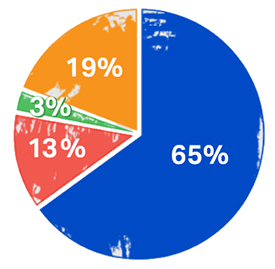Need Help?
We estimate that Sustainable Aviation Fuel (SAF) could contribute around 65% of the reduction in emissions needed by aviation to reach net zero CO2 emissions by 2050. This will require a massive increase in production in order to meet demand. The largest acceleration is expected in the 2030s as policy support becomes global, SAF becomes competitive with fossil kerosene, and credible offsets become scarcer.
Government policy has an instrumental role to play in the deployment of SAF. IATA encourages policies which are harmonized across countries and industries, while being technology and feedstock agnostic. Incentives should be used to accelerate SAF deployment. As SAF is in the early stages of market development, mandates should only be used if they are part of a broader strategy to increase the production of SAF and complemented with incentive programs that facilitate innovation, scale-up and unit cost reduction.
> Read more on our Net Zero Policy Roadmap (pdf)
What is SAF?
SAF is a liquid fuel currently used in commercial aviation which reduces CO2 emissions by up to 80%. It can be produced from a number of sources (feedstock) including waste oil and fats, green and municipal waste and non-food crops.
It can also be produced synthetically via a process that captures carbon directly from the air. It is ‘sustainable’ because the raw feedstock does not compete with food crops or water supplies, or is responsible for forest degradation. Whereas fossil fuels add to the overall level of CO2 by emitting carbon that had been previously locked away, SAF recycles the CO2 which has been absorbed by the biomass used in the feedstock during the course of its life.
Nine biofuel production pathways are certified to produce SAF, which perform at operationally equivalent levels to Jet A1 fuel. By design, these SAFs are drop-in solutions, which can be directly blended into existing fuel infrastructure at airports and are fully compatible with modern aircraft.
> SAF Factsheet (pdf)
Our Vision
- Support the aviation industry long-term climate goal
- Increase the commercial deployment of SAF
Publications
Need Help?
IATA has released a study confirming that there is enough SAF feedstock available for airlines to achieve net zero CO2 emissions by 2050, using only sources that meet strict sustainability criteria and do not cause land use changes.
However, significant barriers remain, including slow technology rollout and competition for feedstock from other sectors.
Achieving net zero will require both maximizing bio-based SAF production and scaling up power-to-liquid technologies, supported by effective policies that prioritize aviation’s unique needs.
> Press release: IATA Study Confirms that SAF Technology Rollout is Main Bottleneck to Net Zero, not Feedstock Availability
SAF Documentation
Our strategy towards net zero CO2 emissions
Achieving net zero CO2 emissions by 2050 will require a combination of maximum elimination of emissions at the source, offsetting and carbon capture technologies.
 |
|



